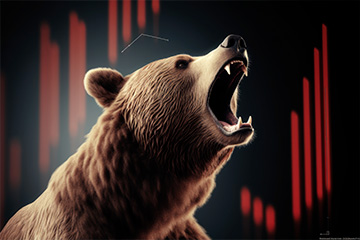How to choose a tracker?

Keytrade Bank
keytradebank.be
June 07, 2021
(updated October 21, 2025)
7 minutes to read
What is a tracker?
A tracker tracks the performance of a stock market index or a basket of shares, bonds, currencies or commodities. If the index or basket rises by 1%, the tracker will in theory also rise by exactly 1%.
A tracker combines certain features of equities with those of traditional investment funds. Like shares, trackers are listed on a stock exchange. So you can buy and sell them in real time. Just like an investment fund (which is not listed on a stock exchange), you can use a tracker to instantly diversify your investments. For example, if you buy a STOXX Europe 600 tracker, you are investing indirectly in all 600 member companies of that index without having to buy the 600 separate shares.
ETF, ETC, ETN, ETP... what's the difference?
When we talk about trackers, we are usually talking about ETFs or Exchange Traded Funds. However, there are also other trackers. Although it is a bit technical, it is useful to know the differences between them. That way, you can always make an informed decision:
ETF
When you invest in an ETF, you are investing in a product that holds the assets it tracks. These assets may consist of equities, bonds, precious metals, commodities or futures.It is also possible that the ETF does not own the assets, but replicates them by buying derivatives (such as swaps and options). The first method (physical replication) is a lot more transparent than the second method (synthetic replication).ETN
An Exchange Traded Note is more like a bond: it is a debt instrument issued by a financial institution. Like a bond, you can hold an ETN until maturity or sell it earlier. When you buy an ETN, the issuer promises you that your return will be linked to the underlying instrument, and the issuer promises to repay you the invested amount on the maturity date.An ETN can be linked to "almost anything". There are ETNs that track commodities, but they are often linked to products and corners of the stock market that are difficult for private individuals to access. Sometimes ETNs combine equity and bond positions, or use strategies that are difficult to package in a traditional ETF.ETC
An Exchange Traded Commodity is a tracker that offers investors access to commodities such as metals, cotton, livestock, natural gas and even CO2 rights. An ETC can track individual commodities or a mixed basket of commodities. An ETC may be an alternative for investors who invest in commodities on the futures market.ETP
An Exchange-Traded Product is the collective name for all types of trackers. ETFs, ETNs and ETCs are therefore all ETPs.
How to choose a tracker A step-by-step plan
1. What exactly do you want to track?
The days when all you could invest in were traditional equity indices are long gone. Today, there are products that track all kinds of assets, regions, sectors and themes.
The first step is to define what exactly you want to invest in. A classic tracker that tracks the MSCI World? A tracker that follows a basket of equities linked to a theme (water, robotics, etc.)? Or a tracker offering exposure to a long position in US Treasury Inflation Protection Securities (TIPS) over 10 years and a short position in US Treasury Bonds with similar maturities?
(Almost) anything is possible. But before you start shopping, it’s a good idea to have a strategy in place and to align your investments to it.
2. Reinvestment or distribution?
As with investment funds, you can sometimes choose between a distribution or reinvestment variant. Any dividends and/or coupons that are paid are reinvested if you choose reinvestment. Dividends and/or coupons are paid out if you choose distribution.
3. What’s under the bonnet?
The most important thing with a tracker is to understand what it is tracking and how it is doing so. Do not blindly rely on the name of the tracker, but look at what is actually happening under the bonnet. This information can be found in the Key Investor Information Document (KID). This allows you to check, among other things, whether the tracker is actually buying the underlying assets or imitating them via derivatives.
It is also best to check out the composition of the underlying positions, which can usually be found on the provider’s website. Two trackers that follow "global banks", for example, may both be invested in very different holdings and/or with different weightings. One tracker might track a basket of traditional high-street banks, while the other also tracks fin techs, insurance companies and asset managers.
4. What is the cost price?
Unlike actively managed investment funds, a tracker does not have a full investment and analyst team behind the scenes (sometimes there is a manager). As a rule, a tracker is a passive instrument: it tries to imitate an index, no more, no less. That is why trackers are generally a good deal cheaper than fully actively managed investment funds.
This does not mean that all the providers (Amundi, Barclays, iShares, DB-X trackers, Invesco, etc.) have exactly the same operating costs. These can have an impact on your return over the long run. On websites such as ETF.com and Morningstar.be, you can compare the costs between different providers.
5. What is the tracking error?
The tracking error is the difference between the performance of the tracker and of the index itself. Although trackers are (generally) passively managed, this does not mean that they are all run solely by algorithms. Sometimes there is still a manager in the background who can reduce the tracking error, for example by lending shares to investors who want to short a share, and collect a fee.
If you pay 0.5% running costs and the ETF has a tracking error of 0.4%, you are 0.9% down. The smaller the tracking error, the better. To find out the extent of the tracking error, you can consult the key investor information document (KID). On websites like ETF.com and Morningstar.be, you can also compare the tracking errors of different ETFs.
6. Trading volume and liquidity
The trading volume is an excellent indicator of liquidity. In general, the higher the trading volume of a tracker, the more liquid it is likely to be, and the smaller the gap between the ask and offer prices. If you have a choice between trackers with similar characteristics, the one with the most liquidity is usually preferable.
Getting started with trackers?
Although trackers themselves are passive instruments, selecting and managing them is something you need to do actively.
At Keytrade Bank, you can choose from around 600 trackers. Would you rather leave the selection and management to a team of professionals? With KEYPRIVATE you invest in a personalised portfolio of trackers, actively managed by our experts.


